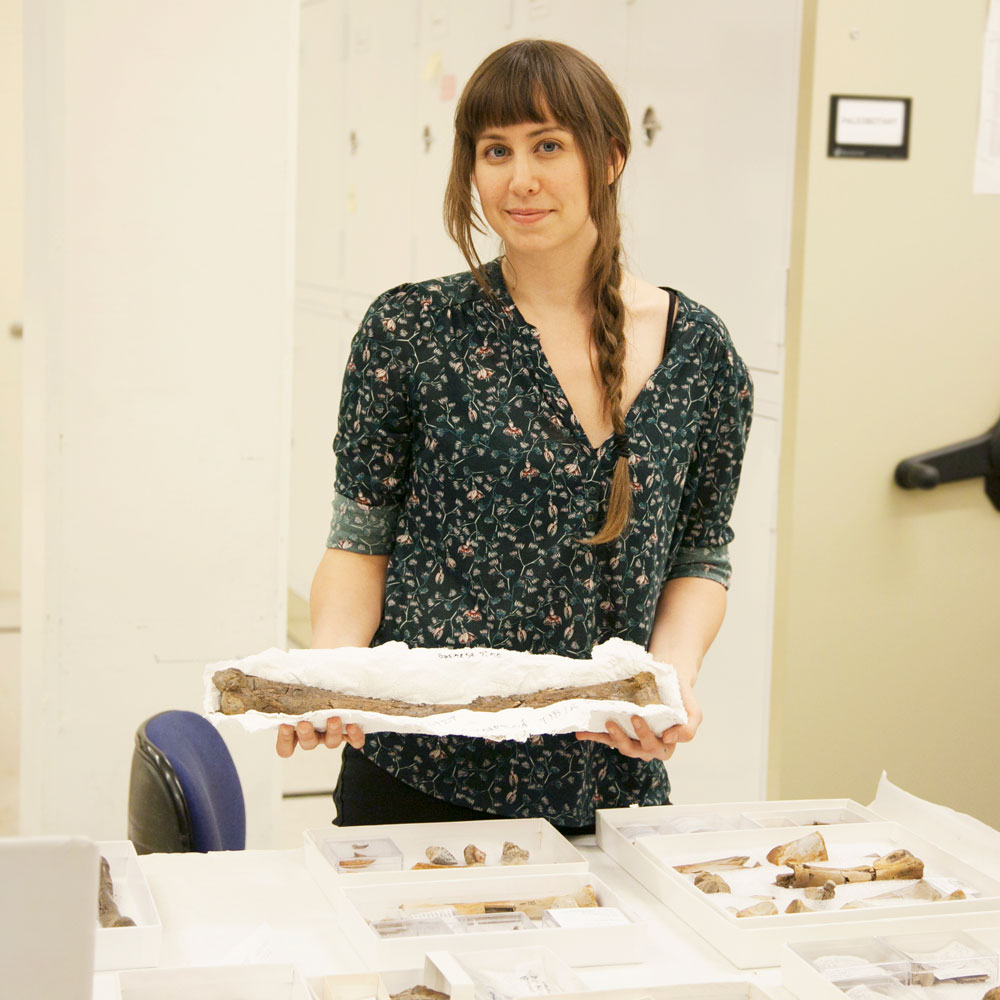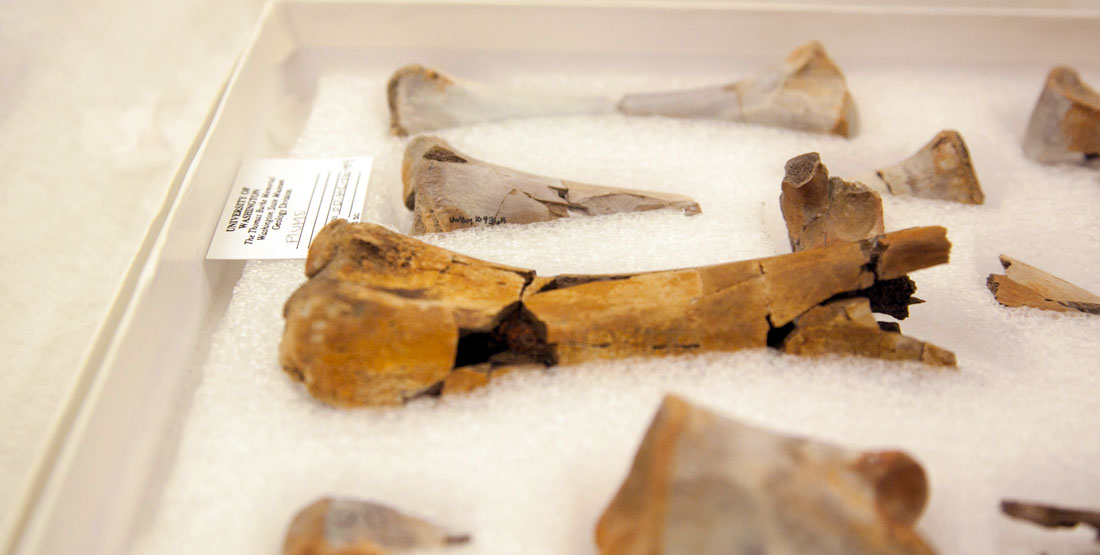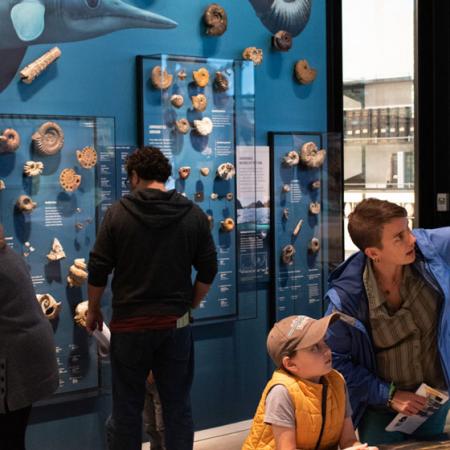
Before heading to the ROM for my PhD, I researched dinosaur eggs at Montana State University with Dr. David Varricchio. While there I described an extremely large pair of oviraptorosaur eggs from the Cretaceous of southeast Idaho in order to gain insights into the parent animal’s nesting behavior and reproductive biology.
By studying the microscopic structure of the eggs, Dr. Varricchio and I were able to determine that the animal buried its eggs in a vegetation mound or nested in a humid environment - more like some reptiles than most open-nesting modern birds. During this research I became very interested in the growth, biology, and ecology of oviraptorosaurs and decided to shift my research into the study of their anatomy and growth.
As part of my doctoral thesis I am examining the diversity and ecology of North American oviraptorosaurs just prior to the end-Cretaceous mass extinction event. Until recently the diversity and growth of these animals was difficult to study because oviraptorosaur fossils were only rarely discovered in North America. Fortunately many new oviraptorosaur specimens have been found over the last several years, opening up research opportunities and allowing us to tackle questions about their growth and evolutionary history.
I’ll be visiting several museums over the next year in order to measure and sample many of these new oviraptorosaur specimens. My main research questions are : 1) How large did these animals get, 2) How quickly did they grow, and 3) What factors shape the anatomy of their feet and hind limbs?
Today most birds grow from hatchling to adult size quickly and baby birds often look very different than the adults of their species. Unfortunately we can’t hatch a baby oviraptorosaur today and watch it grow up!
Instead, microscopic examination of oviraptorosaur bones and measurements of their hind limbs will allow me to calculate their age and growth rate. By aging specimens we can identify juvenile, young adult, and mature adult growth stages, which will allow us to decipher how the anatomy of these animals may have changed as they grew into adults.
My goal is to not only understand how oviraptorosaurs grew, but also to reconstruct how they may have lived and interacted with their environment based on their anatomy. I hope to accomplish this by comparing their hind limb and foot anatomy to that of birds. Modern birds use their feet in order to interact with their environment in numerous and complex ways—relying on them for locomotion, prey capture, grooming, perching, nesting, and even fighting among themselves or for defense from predators or competing species. Eventually I hope to use the wide variety of bird foot skeletal adaptations to infer aspects of extinct theropod dinosaur ecology.
Thanks to the Burke Vertebrate Paleontology Collections Grant, I was able to measure and describe an exciting specimen excavated during last year’s UWBM field season.
The tibia and fibula (two lower leg bones) of this specimen are preserved and will be used to calculate an estimated body size and age for the animal. Portions of the foot are also preserved associated with the hind limb, and I will measure and describe these elements as part of my oviraptorosaur ecology study.
---
Jade Simon is a researcher at the University of Toronto and Royal Ontario Museum where she studies growth and ecology in theropod dinosaurs and birds.
See more fossils in the Vertebrate Paleontology collection or learn more about the Vertebrate Paleontology Collection study grant.



